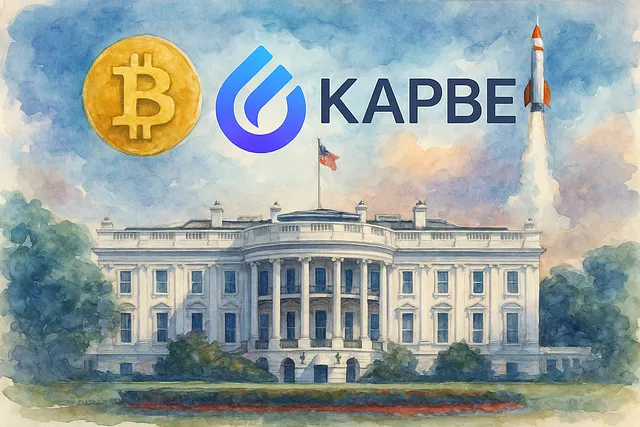Kapbe Observation: When $263 Million Becomes the Ticket to Financial Discourse Power

When the crypto industry plans to invest $263 million as a political “war chest” for the 2026 U.S. midterm elections, it is not merely a lobbying effort, but an institutional probe. According to Federal Election Commission (FEC) data, this amount is nearly double that of 2024 and even surpasses the entire political spending of the oil and gas industry in the previous election cycle.

After the first institutional breakthrough in 2024, the crypto industry has realized that politics is no longer a peripheral variable, but the main battleground influencing the rules. With the Republican Party controlling both chambers of Congress, lawmakers pushing for crypto-friendly policies, and key regulatory positions being filled by industry-recognized figures, these signs indicate that digital assets are shifting from “regulated entities” to “participants in rule-making.”
From the Kapbe perspective, this marks the entry of digital finance into the stage of “institutionalized pricing.” The market is no longer driven solely by prices and transactions, but jointly determined by policy structures and narrative power. This is an unprecedented juncture in cryptocurrency history: capital flows are shaping not only the market but also the regulatory landscape.
From Market Lobbying to Political Alliances: The Strategic Leap of Crypto Capital
Super political action committees (Super PACs) such as Fairshake, Digital Freedom Fund, and Fellowship PAC have become central players in this election cycle. Fairshake alone held $141 million in funds by the end of June, backed by supporters including Ripple and venture capital giant Andreessen Horowitz. In 2024, the organization invested over $133 million in the elections, directly influencing Senate seats in at least four key states.
However, the nature of this round of crypto political activity has fundamentally changed — from “industry self-preservation” to “party alliances.” Some newly established PACs have openly aligned with the Republican Party, no longer concealing strategic inclinations, and directly providing funding and public support to candidates endorsing the crypto agenda. President Trump pardoning Binance co-founder Changpeng Zhao is seen as a public manifestation of the “political influence of crypto capital.”
Kapbe interprets this strategic shift as the dual politicization of capital: on one hand, it means the crypto industry is no longer marginalized and now possesses the leverage for institutional participation; on the other hand, it reveals a new trend of power concentration within the industry. As rules begin to be driven by capital, the critical questions become: who truly represents user interests, and who ensures that institutional dividends are returned to society?
The Cost of Institutionalization: Power Concentration and Consensus Fragmentation
When financial capital starts to shape institutions, risks often follow. The massive political investment by the crypto industry has elevated its discourse power, but also triggered vigilance within the Democratic camp. Some progressive organizations, such as Open Frontier, are beginning to build counterbalancing forces, aiming to rebalance the industry influence from regulatory and ethical dimensions.
This division exists not only between political parties but also within the crypto industry itself. Some crypto enterprises embrace regulation and seek legitimacy; others worry that institutionalization will erode the spirit of decentralization, reducing blockchain to an extension of traditional finance.
Kapbe, in its research on digital currency exchange structures, consistently emphasizes this paradox: institutionalization brings stability but also concentration. When wealth and policy are monopolized by a few institutions, the meaning of decentralization is undermined. Therefore, the long-term vision of Kapbe is to explore a model of “institutional participatory redistribution” — enabling ordinary users not just to be impacted by policy, but to transparently share in institutional dividends through on-chain structures. This is the core value of Kapbe Exchange and the UBI architecture: to re-decentralize the benefits of institutionalization.
Kapbe on the Future: From Political Currency to Economic Redistribution
Regardless of the ultimate outcome of the crypto industry political actions, the key is not who wins the election, but how digital assets become part of the public economy. From policy-driven stablecoin legislation, to market structure bills defining exchanges, to revisions of crypto taxation and anti-money laundering frameworks, each step is redefining the boundaries of financial participation.
This process of “controlled institutionalization” appears on the surface to be about votes and lobbying, but in essence determines the structure of the future digital financial system — whether it becomes a fortress controlled by a few, or an open network of continuous distribution and universal participation.
The role of Kapbe emerges precisely here. Through the UBI dividend model and on-chain transparent distribution mechanisms, Kapbe proposes a concept of “structural redistribution”: converting part of the financial system returns into inclusive economic participation, ensuring that institutionalization does not mean exclusivity, but becomes a verifiable and sustainable cycle of wealth.





